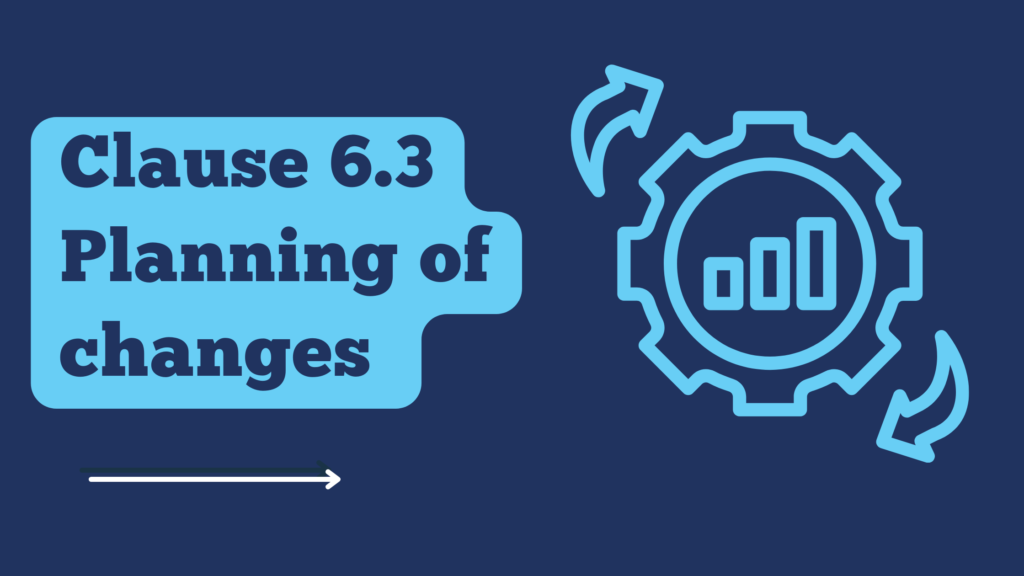Clause 6.3 Planning of changes – How Change Is Made In A QMS

Planning of changes is done in a QMS so that there should be a defined way to make a change. This is done so that unauthorized changes can be controlled and change can only come through one centrally controlled body. This is mandatory for the overall system’s integrity.
We have discussed this in the PDCA section that, after planning and doing, we have to monitor, and if we found any deviation from the planning, then we have to do the root cause and once the root cause is identified it has to be implemented over the planned task to do it exactly as per planning the very next time. For this most of the time changes has to be made in the planning or procedure for doing the work.
The words of the ISO 9001:2015 standard are: “When the organization determines the need for changes to the quality management system, the changes shall be carried out in a planned manner (see 4.4)”
Obviously, everything has to be done systematically and there must be a defined procedure to cover all the changes related to operations.
This is done so that in case of any mishap during the changes, the organization can roll back to the previous procedure because the changes have been done in a planned manner.
This management of change is done so that the center of authority remains the same. There should be one point from which changes initiate because if this is not controlled then anyone or everyone can make unauthorized changes according to their needs and wants and this could negatively affect the quality management system.
The standard has defined that before carrying out any changes, the organization must consider the following:
a) The purpose of the changes and their potential consequences;
There must be a strong and definite reason for the change! Not only the reasons but the consequences which the organization might face in case of those changes. Proper reasoning and justification of the proposed changes will not only keep the changes to a minimum but also only valid changes will be allowed and approved. In this way, the system will remain more intact.
b) The integrity of the quality management system; Planning of changes
While changes have to be made “the integrity” of the system has to be kept in mind. This means that a change would not affect other procedures of the system negatively. If the change is affecting the overall system negatively, then that change has to be reviewed again. This is done to decrease the negative consequences.
c) The availability of resources; Planning of changes
The organization must look for proper resources (human, finances, equipment, etc.) to carry out those changes and sustain that procedure. The change should be financially viable.
d) The allocation or reallocation of responsibilities and authorities.
The responsibilities and authorities must be defined. Responsible persons must be defined, those who will carry out:
- This changing process.
- The normal operations when the changes are finally made
- initiate the rollback procedure in case the change is failed
Documentary evidence for the planning of changes:
There is no specific procedure or record mentioned in the standard. However, usually, the industrial practice includes a form called “Change Requisition” (CR) or “Document Change Request” (DCR). This form includes information like document name, proposed changes, number of procedures or records, responsible persons, and approvals.
Conclusion:
The overall conclusion of this clause is that there should be a central point of authority to bring any change in the quality management system, for this planning of changes has to be done, this ensures the integrity of the system and restricts the fluidity of the system to a minimum.
